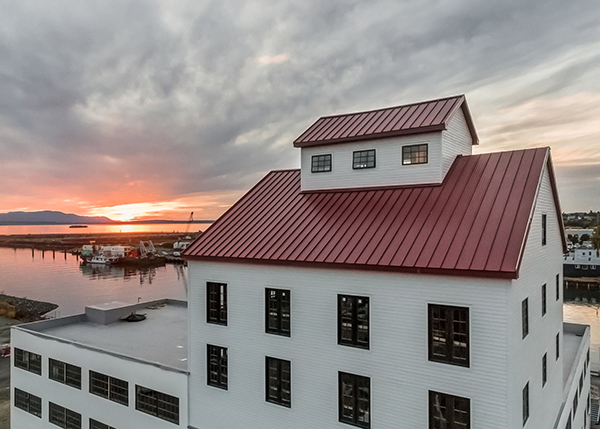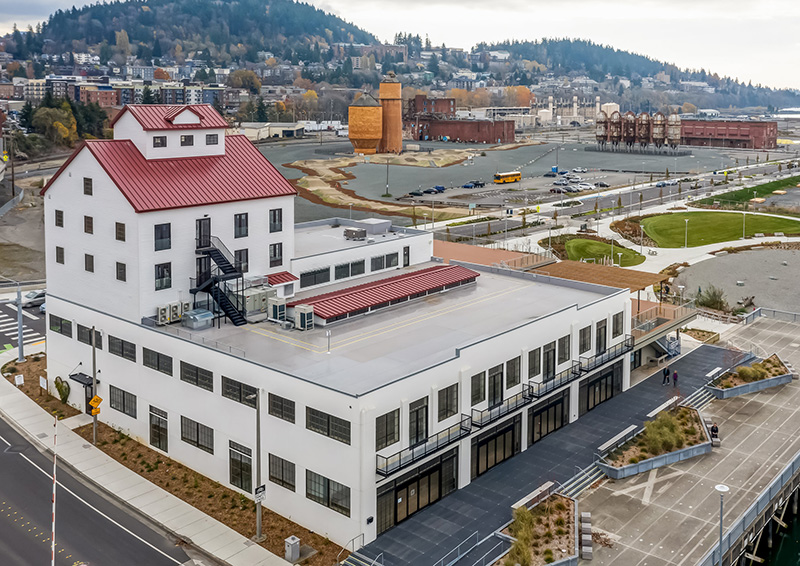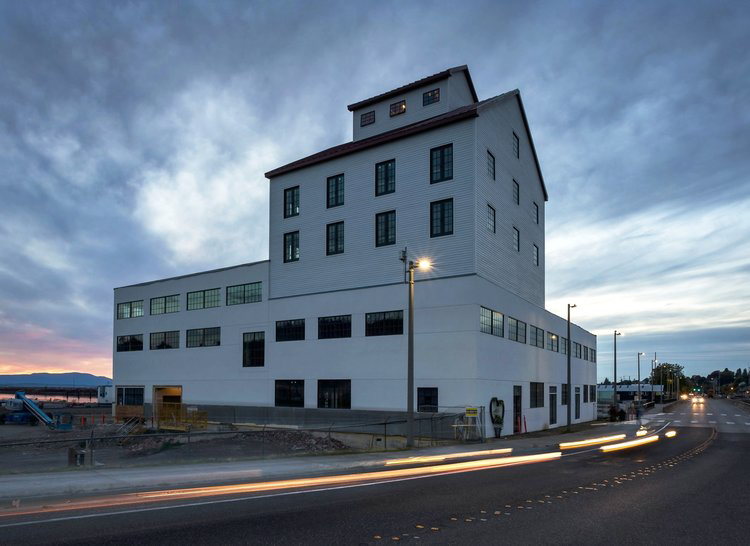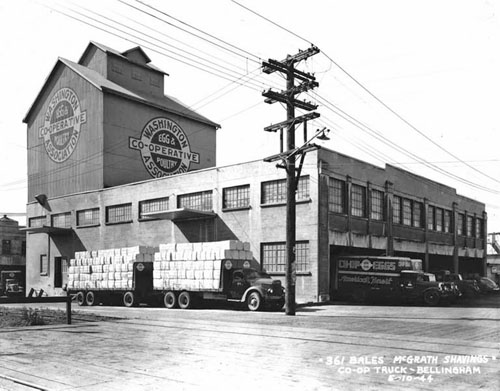Granary Building
Status: Saved!
Year Listed: 2008
Location: Bellingham, Whatcom County
The Granary Building stands as a key part of Whatcom County’s early chicken and egg cooperative movement. In the fall of 1915, a group of farmers formed an association that ultimately led to the organization of the Washington Cooperative Egg and Poultry Association. By 1920, Whatcom County’s chicken population exceeded every other county in the West except one in California. Today, the Granary Building creates a distinct silhouette in downtown Bellingham’s skyline and is architecturally notable as an agricultural building form co-existing within an urban/industrial working waterfront setting.
Through the 1930s and 1940s, the Bellingham waterfront saw major commercial activity and in 1963 one of the world’s largest paper companies, Georgia-Pacific, took over the pulp and tissue mills on the Whatcom Waterway. In its heyday, Georgia-Pacific’s Bellingham operation included the state’s largest ethanol distillery, a research lab and a chlorine plant. At one time, 1,200 local people were employed by Georgia-Pacific, but the industry slowly went into decline, finally closing its doors in the 2000s.
After the closure of the pulp mill, the Port of Bellingham purchased the site and began an extensive environmental cleanup. The City committed to long-term investment and agreed to build new streets and services to the site, dedicating land for public parks, waterfront trails and ecological restoration. The Port and City have partnered to develop a Heritage Trail Concept which includes recommendations on how to showcase historic icons remaining from Georgia-Pacific’s pulp and tissue mill. In 2013, the Port entered into an agreement with Harcourt Bellingham LLC. to develop the Downtown Waterfront area and as of 2019, completed projects include the restoration of the historic Granary Building and Waypoint Park.
The Granary is now a six-storey over basement retail & office building, renovated and modernized after having been abandoned for years. Conversion of the historic grain elevator, which began in 2015, was the first building to be renovated by Harcourt Developments.





